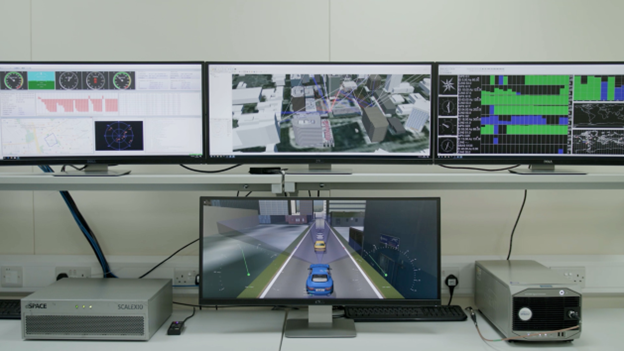
- Category: Space Y News
- 2025-02-10
Autonomous vehicles require accurate and reliable positioning. The positioning division of Spirent Communications, a British multinational telecommunications testing company, makes available access to positioning, navigation and timing (PNT) test equipment to help developers of Connected and Autonomous Vehicles (CAVs) to create safe autonomous driving solutions.
Spirent Communications’ customer, a leading design and engineering company in automotive design and production, wanted to integrate Global Navigation Satellite System (GNSS) signals augmented by real-time kinematic (RTK) correction messages in its autonomous vehicles.
RTK technique uses highly precise measurements at geolocated fixed based stations and then distributes the corrections to enabled devices, allowing them to remove errors caused by several sources (e.g. ionospheric delay, tropospheric delays, satellite orbit inaccuracies and clock errors) contained in the positioning solution. However, this integration requires complex and comprehensive testing to assure the performance required by autonomous platforms.
The primary goal of the customer was to ensure that autonomous vehicles can navigate accurately and safely under various signal conditions, avoiding potential miscalculations and unsafe manoeuvres on the road. Meeting this goal demands perfectly reproducible tests that deliver a full spectrum of corner cases and realistic environments.
Spirent-equipped labs facilitate the design and testing of next-generation PNT systems and other GNSS-based vehicle-to-everything (V2X) applications, ensuring autonomous vehicles stay ahead in technological advancements.
Challenges addressed by the space-based service
One of the biggest challenges in autonomous vehicle technology is ensuring that vehicles can consistently and reliably calculate precise positioning. If an autonomous vehicle loses its GNSS signal or receives inaccurate data, it could miscalculate its position, leading to unsafe driving decisions. This risk highlights the need to understand how a vehicle’s GNSS receiver responds to different signal conditions.
Companies developing autonomous vehicle technology need access to a laboratory environment capable of simulating a wide range of realistic GNSS scenarios. This simulation is needed to recreate diverse and complex signal environments, thorough testing of GNSS receivers under controlled conditions. The addition of RTK corrections in the simulation can offer enormous benefits for precision positioning, but requires thorough testing to prove its benefits.
Benefits of the space-based service
Spirent Communications’ Labs offer several key benefits:
- Realistic Signal Simulation: Spirent simulators’ ability to simulate a large amount of highly realistic signal conditions ensures that CAVs are tested in scenarios they could encounter in the real world with the highest degree of representative realism.
- Enhanced design confidence: Designers can significantly reduce product development time by ensuring precise vehicle positioning early in the design process and minimising reliance on costly, non-repeatable field testing. This brings the dual benefits of accelerating time to market and enabling greater confidence in the reliability and safety of the final product.
- Advanced testing capabilities: The resulting CAV test system is a powerful tool for designing and testing new Intelligent Transport Systems (ITS) applications, accelerating the market readiness of CAV technologies.
- Future-proof solutions: Spirent-enabled labs can and do support the design and testing of future PNT systems and other GNSS-based vehicle-to-everything (V2X) applications, ensuring that autonomous vehicles remain at the forefront of technological advancements.
Implementation Timeline
Spirent has been supporting the testing and validation of automotive positioning systems since the first developments of GNSS-derived in-vehicle navigation systems in the 1990s. Since then, the company developed a range of solutions, including:
- Standalone simulation systems
- Hardware-in-the-loop rigs (e.g. test real hardware by connecting it to a real-time simulated environment)
- Record & playback systems that capture and reproduce signals, allowing for the analysis and review of past events.
One of the core principles of Spirent’s simulations is interoperability, which ensures that implementation timelines are always short and reliable. With the spread of systems onboard vehicles —particularly autonomous ones— the integration with leading simulation platforms from other suppliers helps customers to stay ahead of the industry.
Intended users
- CAV manufacturers
- Sub-system developers
- Testing labs
To sum up
Spirent Communications’ Positioning Technology Division is playing a key role in the advancement of autonomous vehicle technology. By addressing critical challenges related to GNSS signal reception and accuracy, Spirent is ensuring that CAV developers can bring safer, more reliable autonomous driving solutions to market faster. This innovation enhances the safety and efficiency of autonomous vehicles, but also positions them as a key component of the future of transportation.
